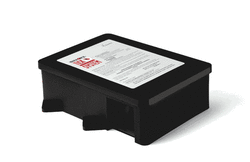 The long awaited results are finally in from the Tick Project, which tested two different environmentally safe tick treatments in suburban yards to see if they reduced deer tick numbers and the incidence of tick-borne diseases in people and pets. Unfortunately, the results of this multi-year project (2017 to 2020) are not as good as hoped.
The long awaited results are finally in from the Tick Project, which tested two different environmentally safe tick treatments in suburban yards to see if they reduced deer tick numbers and the incidence of tick-borne diseases in people and pets. Unfortunately, the results of this multi-year project (2017 to 2020) are not as good as hoped.
What they did: The Tick Project was a four year study in 24 New York neighborhoods with a high incidence of Lyme disease. They tested 2 products - either together or separately, as well as having yards that were not treated (the placebo group).
One treatment was spraying Met52 on low vegetation. This spray is made up of water and the fungi Metarhizium brunneum (formerly Metarhizium anisopliae), which is naturally found in forest soils and is non-toxic to humans and pets. Studies had shown that ticks die within 3 to 7 days after being exposed to Met52.

Tick bait boxes placed on properties was the second treatment tested. The Tick Control system or TCS is a small bait box that attracts rodents. When an animal enters the box, it receives a small dose of fipronil, the active ingredient in many tick treatments used on dogs and cats. Fipronil kills ticks on animals like chipmunks and mice, which are largely responsible for infecting ticks with the Lyme bacterium.
Results: The researchers found that the numbers of ticks decreased by about half on the properties with the TCS bait boxes, but found no reduction in tick numbers from the Met52 fungal spray. Unfortunately, there were just as many cases of tick borne diseases in the humans living on properties treated with either treatment (when compared to no treatment).
Even though human encounters with ticks was about 20% lower in neighborhoods treated with both treatments, the difference was not statistically significant. But you can say it was trending that way.
 However, the incidence of tick-borne disease in pets went down significantly, lower by about half - on properties treated with either treatment or both treatments.
However, the incidence of tick-borne disease in pets went down significantly, lower by about half - on properties treated with either treatment or both treatments.
Why these results if tick numbers are lower in bait box or both treatment properties? One possibility is that humans were picking up the tick-borne diseases when off their properties (after all, humans go to parks, other neighborhoods, etc.), but pets are more limited in where they go - they tend to stay home. Or perhaps the tick numbers, even though significantly reduced, were still too high. Note that less than 50% of each neighborhood participated.
Another possibility is that many residents were also engaging in tick prevention strategies (monitoring, tick repellants, etc.) so it was hard to see if there were effects on the numbers of people getting tick-borne diseases. After all, the incidence of tick-borne diseases was low over the 4 year period - average of only 5.5 cases per neighborhood.
Other studies have similar results: By the way, these results are similar to an earlier large well-done study (2727 households in 3 states) in which researchers treated some yards with insecticide and others with a placebo. The treated yards knocked back tick numbers by 63 percent, but families living in the treated homes were still just as likely to be diagnosed with a tick-borne disease.
Bottom line: Keep up daily tick checks after being outside in known tick areas. Change clothing and shower if possible, definitely before bed time. Hopefully we'll have vaccines for tick-borne diseases soon.
The Tick Project site - all sorts of information, including results. Easy to read. Home page: The Tick Project Results: Tick Project results page.
The official study publication posted on the CDC (Centers for Disease Control and Prevention) site, in the journal Emerging Infectious Diseases: Effects of Tick-Control Interventions on Tick Abundance, Human Encounters with Ticks, and Incidence of Tickborne Diseases in Residential Neighborhoods, New York, USA
